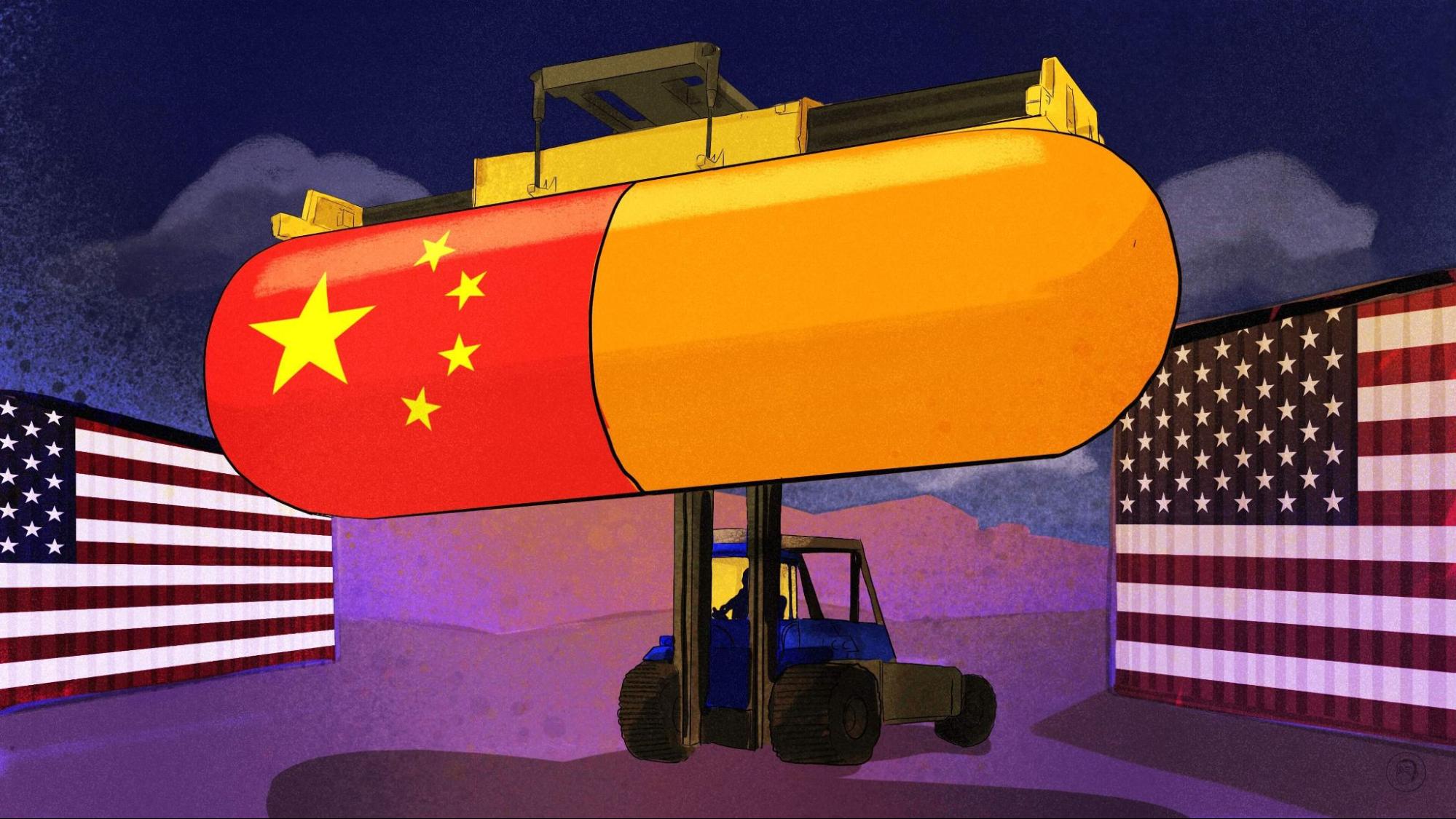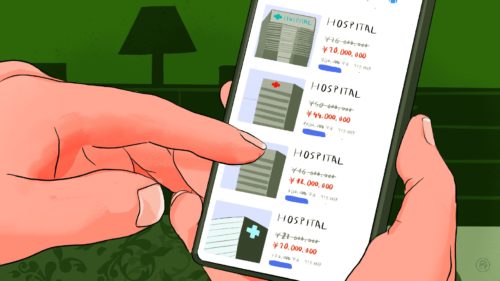U.S. drug shortages highlight dependence on China, gray supply chains
Democrats and Republicans both talk about punishing imports of Chinese ingredients and improving America’s ability to make key drugs at home. But right now, Americans need China for their meds.

The U.S. Food and Drug Administration (FDA) is loosening restrictions to allow the Chinese company Qilu Pharmaceuticals to import cisplatin, a cancer medicine currently in short supply in America.
The emergency move to import Qilu’s cisplatin, which is not FDA-approved, comes as U.S. hospitals ration chemotherapy drugs that can dramatically improve a patient’s prognosis. An FDA official told The China Project that the agency is exploring continued importation of cisplatin and temporary importation of another cancer drug, carboplatin, but, when asked, wouldn’t provide details on plans for further temporary importation from China. This is the first time the U.S. has allowed for temporary importation of cisplatin, the FDA official said.
The FDA’s emergency import of medicine from China shows just how reliant America has become on Chinese manufacturers of active pharmaceutical ingredients (APIs) for a range of products from cancer therapeutics and antibiotics to the ingredients in the Adderall used to treat attention deficit hyperactivity disorder (ADHD).
The FDA official’s reluctance to share details of the emergency imports highlights how hard it has been for the U.S. to manufacture critical drugs at home at a time when lawmakers in Washington are concerned about China weaponizing its pharmaceutical manufacturing advantage by cutting off supplies.
“We’ve seen young moms frantically calling from pharmacy to pharmacy this past winter, even now, to get basic antibiotics for their child,” Charles Tabouchirani, a pharmacist in New York City, told The China Project.
The current shortages are among the worst Tabouchirani has seen since opening Cherry’s Pharmacy on Manhattan’s Upper East Side in 2004.
To prevent this kind of scare, or worse, members of both chambers of Congress introduced the Protecting our Pharmaceutical Supply Chain from China Act in March 2022. Had it ever come to a vote and passed, it could have phased in bans of APIs made in China.
The FDA’s decision to import cisplatin from China demonstrates the risk of banning drugs without first building the capacity to manufacture them in the U.S. — an expensive endeavor when China makes the drugs at a lower cost due partly to an overabundance of labor.
Some U.S. lawmakers are urging international big pharma to consider sourcing drugs and APIs from countries other than China, where many of the biggest global drug makers have long-standing partnerships.
“I think pharma is also contemplating redundant supply chains,” U.S. Representative Ami Bera (D-CA), a former physician who sits on the House Foreign Affairs Committee, told The China Project. “They’ve already made massive investments in China as well, so they’re not going to shut down those investments. Our message is not to expand that presence [in China], but actually to think about other places to make those investments and create those supply chains.”
China news, weekly.
Sign up for The China Project’s weekly newsletter, our free roundup of the most important China stories.
Cisplatin is just one of many drugs in short supply in the U.S. this year. Many Americans have had a difficult time finding the ADHD drug Adderall and common antibiotics like amoxicillin.
Cisplatin is used to treat various types of cancer, and has caused a two-thirds drop in deaths from testicular cancer since 1978.
The recent shortage of cisplatin occurred when the FDA found quality control problems at an Indian factory that makes the drug and other cancer-fighting drugs.
“Some of those shortages have created other shortages,” Erin Fox, a professor at the University of Utah College of Pharmacy, told The China Project.
Dependence on made-in-China APIs
During the COVID-19 pandemic, when world supply chains were disrupted, U.S. reliance on the import of drugs from China deepened despite a recent rise in tensions between Washington and Beijing. In 2020, the U.S. sourced around 2.5% of its finished pharmaceuticals from China. By 2022, that number had jumped to more than 6%.
When looking at drug ingredients, the reliance on China is even higher. For the last decade, the U.S. has imported an average of 17% of its APIs from the People’s Republic.
Buying APIs elsewhere may not be the solution. Other countries export drugs to the U.S. that also contain APIs from China. According to a 2021 U.S. Department of Commerce report, India, which supplies approximately 40% of generic pharmaceuticals used in the U.S., itself imports 70% of its APIs from China.
The same report pointed out that drug makers don’t see an upside to moving manufacturing to the U.S., especially when it comes to generic medicines. Lower labor costs and looser regulations drive drug makers to set up factories outside the U.S., especially when making medications with low profit margins. As a result, 87% of manufacturing facilities registered with the FDA that make the APIs used in generic products are located outside the U.S.
As Chinese live longer and face health issues stemming from pollution and an increasingly Westernized diet, Beijing is ramping up the nation’s own drug-making capacity. With an emphasis on biotech as a key industry for China’s future, Beijing is investing in producing drugs that treat ailments more common in old age, drugs that have been common in the U.S. for decades.
China’s role in the supply chain varies drug by drug. In the case of antibiotics such as penicillin G benzathine, which is currently in short supply in the U.S., China plays a critical role. Three of the four factories producing the medication are in China. Pfizer, the sole supplier of the drug in the U.S., didn’t respond to a query about the cause of the current shortage.
Reasons for drug shortages are not always related to China. In the case of Adderall, demand for the stimulant grew during the pandemic as people with ADHD struggled to focus when working from home. Telemedicine made getting the drug easier, Tabouchirani, the Manhattan pharmacist, said. Recent restrictions on the internet purchase of Adderall (which sometimes is abused), and the shutdown of a factory, contributed to the shortage of the drug, whose APIs are produced in India as well as in China.
Policy solutions and their shortcomings
Knowing exactly where a drug’s ingredients come from can be challenging. In the U.S., executive orders and draft legislation trying to force transparency on big and often publicly listed drug-makers have had limited success.
The Biden administration in September 2022 issued an executive order aimed at bolstering American ability to manufacture critical APIs at home. A March 2023 follow-up report set forth non-binding goals such as producing at least 25% of all the APIs used in making drugs we swallow as pills in the U.S. by 2025.
The 2020 Coronavirus Aid, Relief, and Economic Security Act also included provisions that required drug manufacturers to “develop, maintain, and implement, as appropriate, a redundancy risk management plan” to mitigate risks to supplies of key drugs.
But the CARES Act requirements are not being implemented, Fox, the Utah pharmacology professor, said. Why? Because no enforcement guidelines or penalties were built into the legislation.
“Because we don’t understand which companies are using API from China right now, I think just doing a blanket ban…could definitely create a lot of shortages,” Fox said.
The FDA’s 2024 budget includes legislative proposals that aim to build in enforcement of supply transparency and penalties for violations thereof.
The authors of the Congressional 2022 bill that would have banned Chinese API imports had it gone to a vote and passed were Representative Mike Gallagher (R-WI) and Senator Tom Cotton (R-AR). Neither man responded to requests for comment on recent drug shortages or American big pharma’s continued reliance on China.
U.S. drug makers are not required to disclose where they get the APIs that go into their products.
Janet Woodcock, the FDA’s former director of the Center for Drug Evaluation and Research, said in Congressional testimony in 2020 that the agency does not have a firm handle on amounts of APIs being produced in China.
Fox, the Utah professor, said that U.S. big pharma treats the source of their APIs as trade secrets.
“They compete on that,” Fox said. “I think the FDA…as a matter of national security, should absolutely be looking at our dependence on all single sources of API.”
Bera, the California Democrat, does not mince words when he hears about big pharma protecting its bottom line at the cost of good healthcare.
“This is about patients, this is about life and death therapies,” Bera said. “If we don’t have cooperation from industry, then you might see us have a much heavier hand. Trade secrets are one thing, but if your mom or dad or son or daughter is dying over here because you can’t get necessary therapy, that’s a problem that we ought to fix.”
Companies
Qilu Pharmaceuticals 齐鲁制药
Sources and additional data
The “Accidental” Cure—Platinum-based Treatment for Cancer: The Discovery of Cisplatin / National Cancer Institute
The US is relying more on China for pharmaceuticals — and vice versa / Atlantic Council
FACT SHEET: President Biden to Launch a National Biotechnology and Biomanufacturing Initiative / White House
BOLD GOALS FOR U.S. BIOTECHNOLOGY AND BIOMANUFACTURING / White House
BUILDING RESILIENT SUPPLY CHAINS, REVITALIZING AMERICAN MANUFACTURING, AND FOSTERING BROAD-BASED GROWTH / White House
Gallagher, Colleagues Introduce Bill to End US Dependence on Chinese-Manufactured Pharmaceuticals / Mike Gallagher Website
Is the United States Dependent on China for Pharmaceuticals? / U.S.-China Business Council
Why is the world suffering from a penicillin shortage? / Al Jazeera
The ongoing, unnecessary Adderall shortage, explained / Vox
Teva plans to cut back generic drug production even as shortages intensify / Bloomberg
How much does U.S. rely on China for drugs? FDA simply doesn’t know / Fierce Pharma

